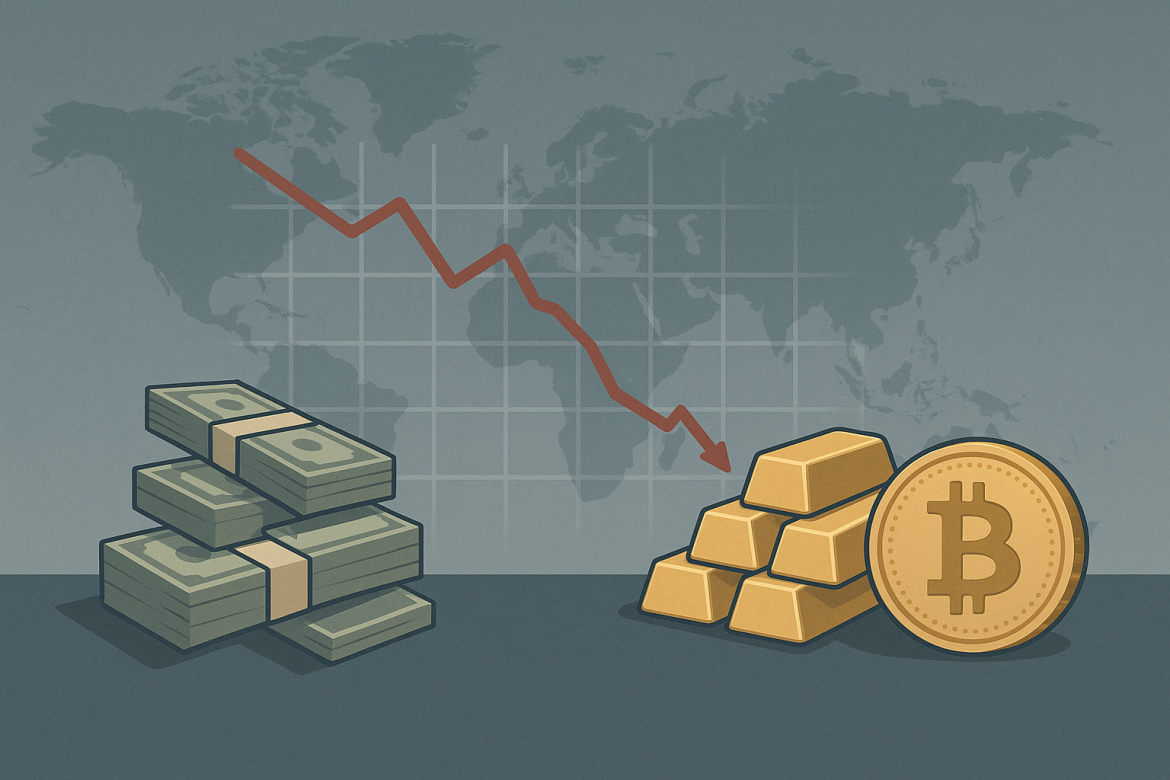The global liquidity cycle is entering a decisive contraction phase, raising the risk of a prolonged downturn in equity markets, according to veteran strategist Michael Howell.
Speaking on the MacroVoices podcast, Howell, chief executive of London-based CrossBorder Capital, said liquidity conditions are deteriorating rapidly, ending what he describes as a speculative bubble in US stocks.
He expects a correction that could unfold over the next two to three years as liquidity withdrawals ripple through financial markets.
Howell expects Gold and Bitcoin to be hedging assets as governments are expected to print money and devalue currency to refinance debts.
Liquidity cycle near end of five-year phase
Howell’s framework centers on the global liquidity cycle, the flow of capital through world financial markets that he believes broadly dictates asset-price behavior.
His research suggests these cycles typically span five to five-and-a-half years, aligning with the average maturity of global debt.
The current cycle began around the onset of the pandemic in 2020, placing financial markets late in the expansion phase.
Howell estimates global debt stands at roughly $350 trillion, meaning around $70 trillion must be refinanced annually.
That rhythm, he argues, creates a predictable liquidity cadence that now points decisively downward.
Signs of strain are already emerging. Howell noted rising tensions in repo markets reminiscent of 2019, a signal he views as an early warning of tightening liquidity conditions.
Historically, he said, the S&P 500 reacts to liquidity shifts with a six-month lag, implying pressure on equity valuations could intensify in the months ahead.
Commodities favored as liquidity tightens
While Howell remains cautious on stocks, he argues that certain sectors tend to outperform during late-cycle liquidity contraction.
Commodities and mining shares, he said, have historically benefited in similar phases as investors rotate toward real assets and inflation hedges.
His broader macro view is shaped by what he sees as the long-term inevitability of monetary expansion.
With global debt burdens swelling, Howell believes governments ultimately have limited approaches to manage refinancing pressures.
“Printing money,” he argued, becomes the path of least resistance, particularly as political incentives intensify ahead of election cycles.
Howell cited Japan and China as examples of economies where heavy debt issuance triggered monetary deflation and subsequent currency devaluation.
In response, central banks allowed exchange rates to weaken, a dynamic he believes could repeat elsewhere as financing needs deepen.
Gold and Bitcoin seen as key hedging assets
Against this backdrop, Howell expects a resurgence of quantitative easing globally by 2026.
He predicts that fiat-currency debasement will make alternative stores of value increasingly attractive. In his outlook, both gold and bitcoin play critical roles.
Howell projects gold could reach $10,000 per ounce by the mid-2030s, supported by long-term inflation and the structural expansion of global money supply.
He also views bitcoin as a complementary hedge rather than a competing asset, despite its recent drop of about 30% from record highs.
Political considerations may also shape near-term liquidity trends.
With US midterm elections less than a year away, Howell expects policymakers to lean toward supporting household-level stimulus rather than financial markets.
He pointed to recent comments from President Donald Trump about potential $2,000 household checks as indicative of that direction.
As liquidity continues to recede, Howell believes the equity market faces several challenging years ahead, with investors increasingly turning to hard assets as financial conditions tighten.
The post Gold and Bitcoin seen as key hedges by this market expert as global liquidity dries up appeared first on Invezz
